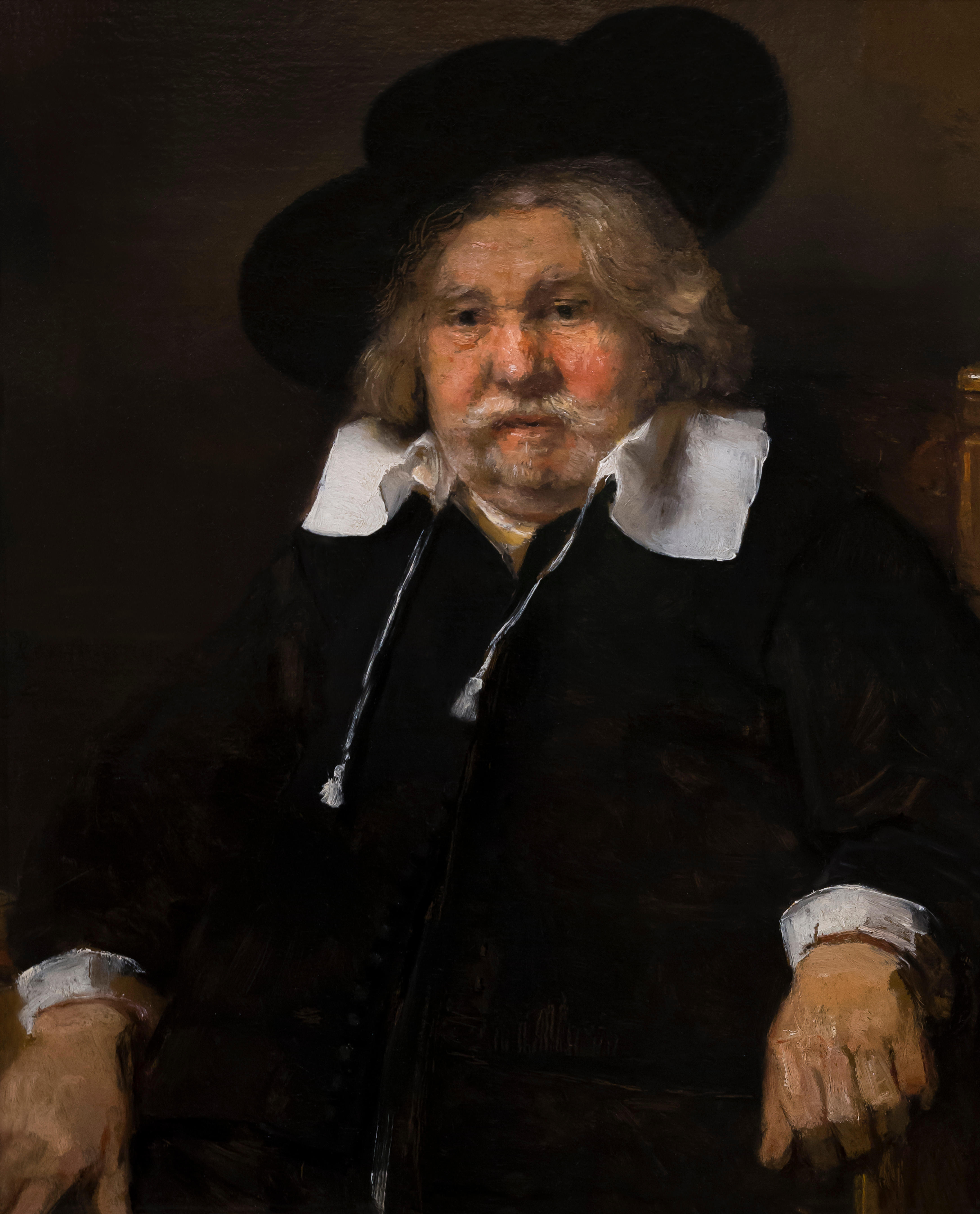My Favourite Painting: James Mayor
'You feel a strange affection for him as you stare at each other. I never could understand how this painting was allowed to leave the UK.'


James Mayor chooses Portrait of an Elderly Man
‘The Mauritshuis is a hidden gem. Not only does it have two world-famous Vermeers – The Girl with a Pearl Earring and View of Delft – but the gallery has two rooms of Rembrandts. In one of them, you have a real treat.
'Sitting on a bench, you have this painting to your left; in front of you, a self-portrait; and, to your right, a portrait of Homer. The reason for my choosing this one is that it isn’t exactly what you think of in a Rembrandt.
'Here is a painting of a rather pathetic old man, painted in an extremely modern way that’s unique to Rembrandt. You feel a strange affection for him as you stare at each other. I never could understand how this painting was allowed to leave the UK ’
James Mayor is a Modern art dealer, who has been running the Mayor Gallery since 1973.
John McEwen on Portrait of an Elderly Man:
Vasari wrote of Titian that his ‘last works are executed with bold strokes and dashed off with a broad and even coarse sweep of the brush’, a method that ‘makes pictures appear alive and painted with great art, but conceals the labour’.
In the 18th century, there was Goethe’s maxim: ‘Ageing is a gradual withdrawal from appearances.’ It came to define the 19th-century German notion of the Altersstil (‘old age style’), a tendency to abstraction and formal simplicity combined with emotional depth and understanding, the reward of genius. Rembrandt is its ultimate exemplar.
Such understanding could be induced by empathetic infirmity or hard-earned experience. In Rembrandt’s time, old age was reckoned to begin at 50, 60 at most. His own ‘old age’ was certainly not for cissies. In 1656, he was bankrupted; in 1663, his much younger lover died and, the year after he painted this picture, so did his only son, Titus.
Exquisite houses, the beauty of Nature, and how to get the most from your life, straight to your inbox.
However, he wasn’t restricted by infirm-ity, as the delicacy of his touch and sheer productivity show. In the early 1660s, he painted as much as in his first glory years of the 1630s. And, although it was claimed that, in bankrupt old age, he kept company with ‘ordinary folk and practitioners of art’, he continued to have rich sitters.
Today, his last portraits are still considered an artistic apogee, exhibiting ‘the almost uncanny knowledge Rembrandt appears to have had of what the Greeks called the “workings of the soul”’ (Ernst Gombrich, The Story of Art), as we see here, in this portrait of a dishevelled, now unknown, old man. It was sold to the Mauritshuis by the trustees of the Cowdray estate, West Sussex, in 1999.
Country Life is unlike any other magazine: the only glossy weekly on the newsstand and the only magazine that has been guest-edited by His Majesty The King not once, but twice. It is a celebration of modern rural life and all its diverse joys and pleasures — that was first published in Queen Victoria's Diamond Jubilee year. Our eclectic mixture of witty and informative content — from the most up-to-date property news and commentary and a coveted glimpse inside some of the UK's best houses and gardens, to gardening, the arts and interior design, written by experts in their field — still cannot be found in print or online, anywhere else.
